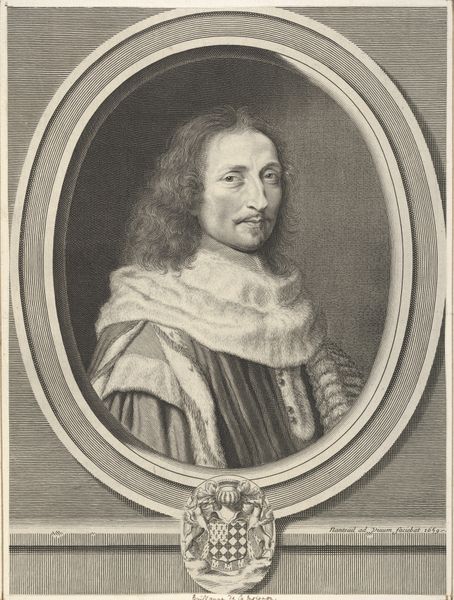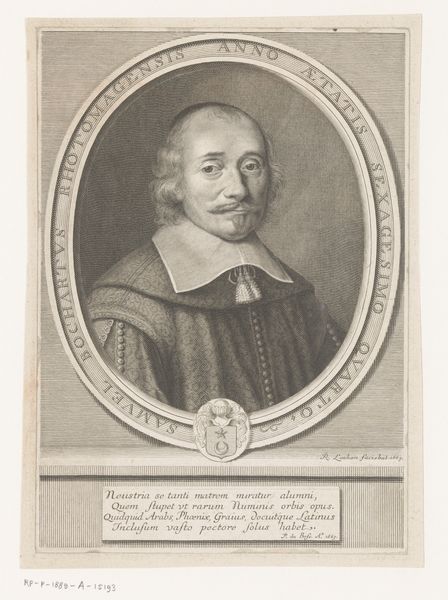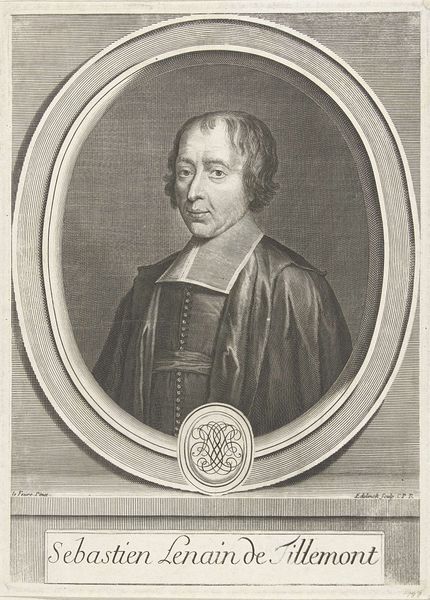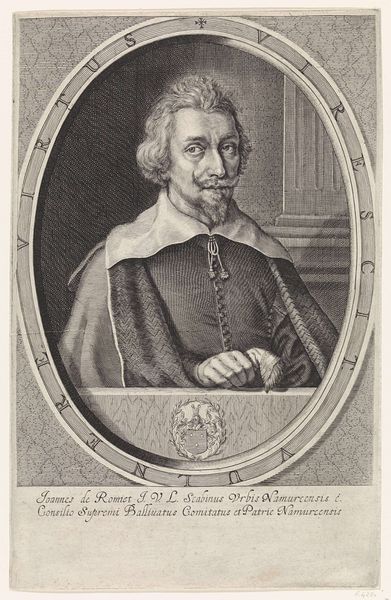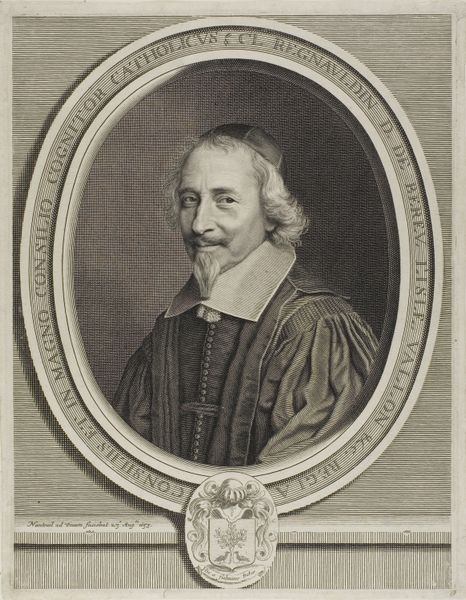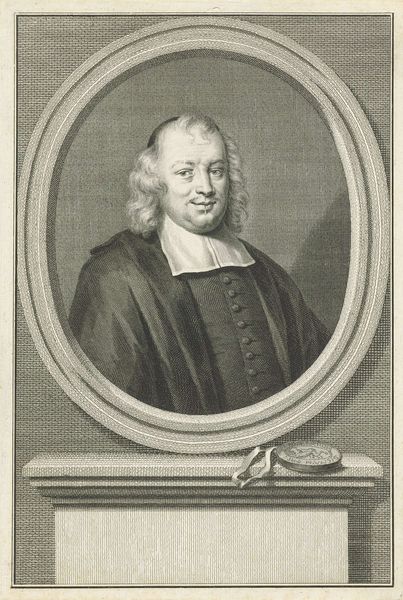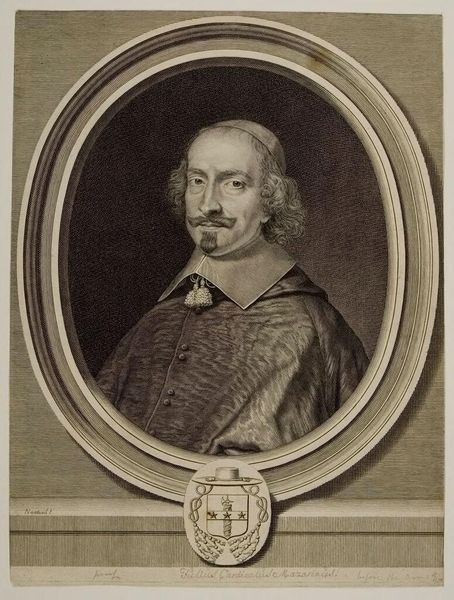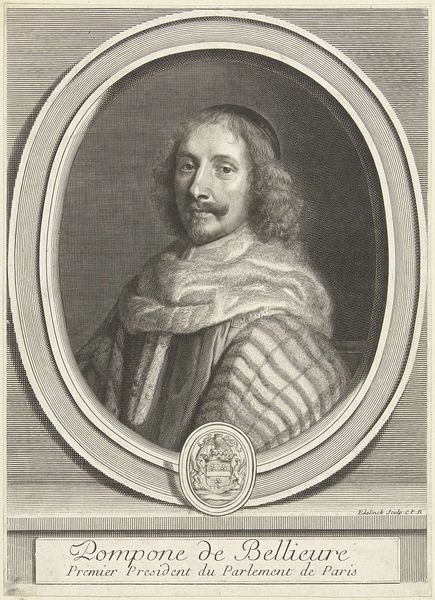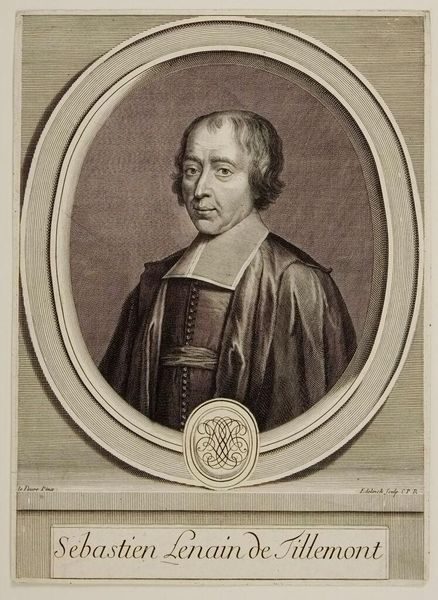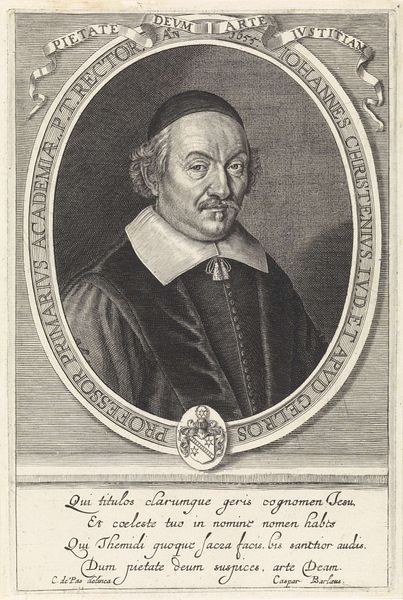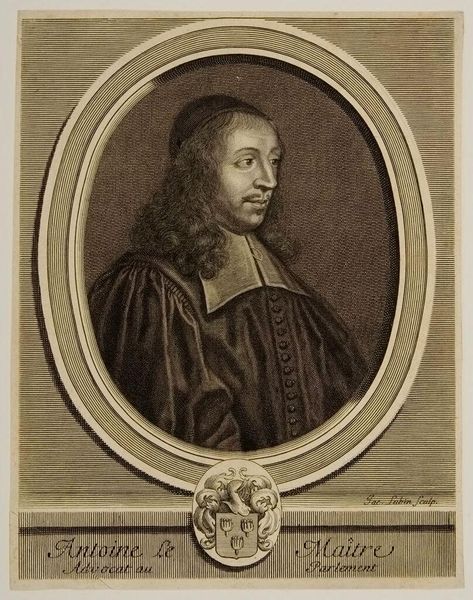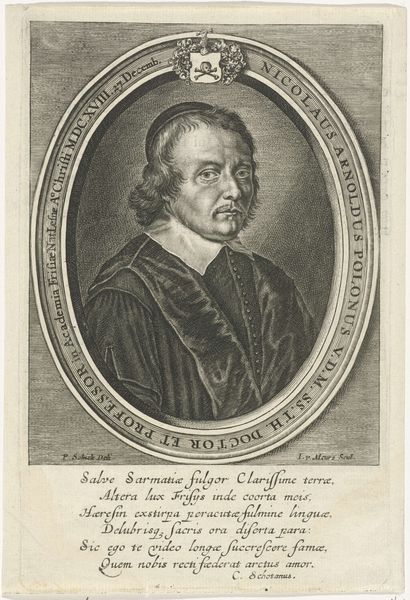
engraving
#
portrait
#
baroque
#
history-painting
#
engraving
Dimensions: height 255 mm, width 188 mm
Copyright: Rijks Museum: Open Domain
Editor: This is Pieter van Schuppen's "Portrait of Samuel Bochart," an engraving from 1699. The man looks rather dignified and solemn, framed in an oval. What strikes me is the contrast between the smoothness of the face and the detailed rendering of the clothing and the hair. What do you see in this portrait? Curator: Portraits are fascinating windows into history and psychology. Note the carefully rendered coat of arms below Bochart's name. In the visual language of the time, the crescent moon and star were highly symbolic. How do you think these symbols reflect Bochart's identity, and his place in 17th-century society? Editor: I hadn't paid attention to the coat of arms at all. Given his attire, and the period, perhaps they refer to religious affiliation or status within his community? Curator: Precisely! The symbols embedded within, layered with meanings reflecting family heritage and religious background. Consider how dress, pose, and even the gaze all communicate something specific to a contemporary audience. What emotions or values do you think the artist was trying to convey? Editor: The way he looks out, slightly to the side, makes him seem thoughtful, almost scholarly. It creates a sense of connection but also distance. Almost like he's considering an important question. Curator: Exactly. The power of portraiture resides in the stories, values, and ideas captured in these carefully constructed images, and that resonate across the ages, through symbolic language that often persists unconsciously. Editor: I see now, the engraving becomes more than just a likeness; it’s a cultural document. Thanks for pointing out how the symbols and imagery enhance the cultural and emotional understanding of this piece. Curator: Indeed. Each symbol holds a piece of cultural memory and continues to carry significance today, once we know how to read it.
Comments
No comments
Be the first to comment and join the conversation on the ultimate creative platform.
